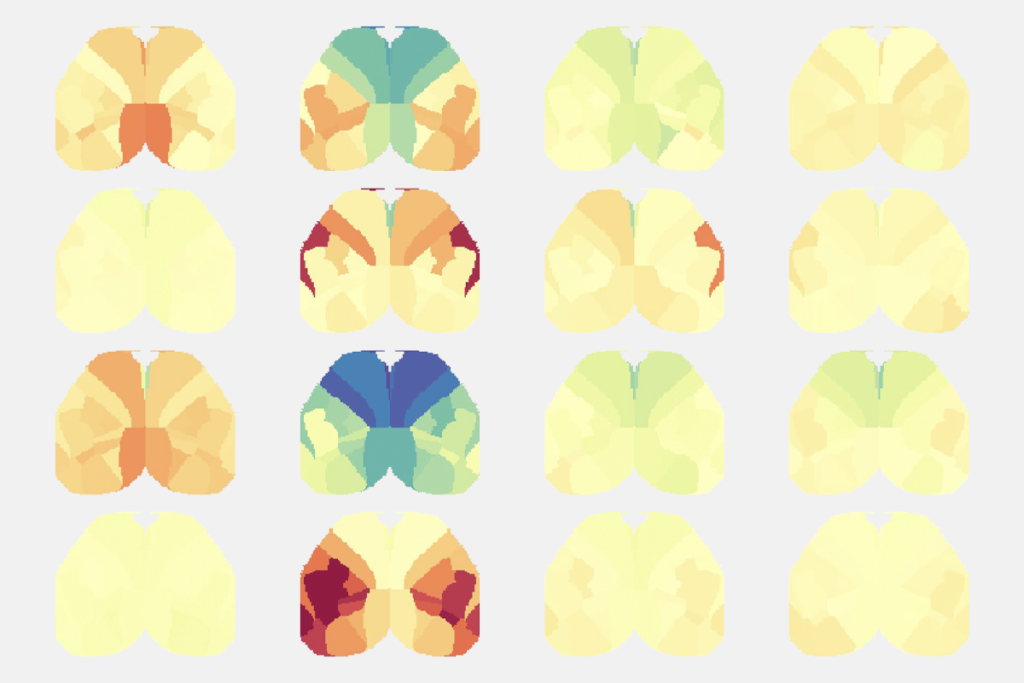Brain’s social ‘river’ carries clues about autism
Researchers are homing in on the superior temporal sulcus, a groove in the brain that collects social information, as a key player in autism.
Social skills — the ability to hold a conversation, interpret an expression or decode body language — spring from activity within various, scattered hubs in the brain. But autism researchers are taking aim at certain hot spots to learn how people acquire, or fail to acquire, this important set of abilities.
They have found that many of these skills involve a long groove on the brain’s bumpy surface that runs along each side of the head, over the ears. The groove is called the superior temporal sulcus (STS) and is the home of numerous differences in function between people with autism and typically developing individuals.
The STS is attuned to socially meaningful stimuli, such as a person’s tone of voice, facial expression or body movements. By capturing such information, it plays a role in perceiving another person’s thoughts and feelings and predicting their actions. It is also involved in processing language. Autism typically affects all of these abilities.
“There are several socially relevant functions that we know are occurring there that appear to be different in autism,” says Kami Koldewyn, lecturer in psychology at Bangor University in Gwynedd, Wales.
Researchers are exploring how the STS could help them gauge the response to autism treatments.
“I think as we gain a better understanding of the STS, we could possibly use its pattern of activation as some kind of indication of treatment effectiveness,” says Elizabeth Redcay, director of the Developmental Social Cognitive Neuroscience Lab at the University of Maryland, College Park.
Increasing activity in the area, scientists say, might even enhance the efficacy of some behavioral interventions.
A river runs through it:
Scientists have traced the anatomy of the STS from just inside the temple to behind the ear and then up slightly, toward the crown of the head. The STS collects streams of information from neurons on its banks the way a river collects tributaries.
Much of what is known about this river of data comes from functional magnetic resonance imaging (fMRI) studies that track which parts of the brain light up in response to images, sounds or other stimuli. In people with autism, the STS doesn’t respond as strongly or preferentially to social stimuli as it does in controls. For example, the groove’s upper bank is typically more sensitive to voices than to other kinds of sounds. But this preference is missing in people with autism1.
“Across a number of different kinds of social tasks, there is this reduced specialization,” Redcay says.
In one study, which remains particularly influential after more than a decade, researchers showed participants a video of a character who looks either toward or away from a flickering checkerboard that appears briefly in a corner of the screen. Controls show more and longer-lasting activity in the STS when the character looks away from the checkerboard, as if their brains are puzzling out the unexpected response. But those with autism show equal STS activity regardless of the character’s gaze2.
“We showed that in people with autism, you failed to get that extended processing” when the character looks away from the checkerboard, says Kevin Pelphrey, who conducted the work as a postdoctoral researcher at Duke University in Durham, North Carolina.
Now a psychology professor at Yale University, Pelphrey has continued to explore different aspects of STS function and their relationship to autism. He and others have found that compared with controls, people with autism have a muted STS response to biological motion, the movement patterns characteristic of the human body3.
Similar patterns hold for more complex cognitive functions such as joint attention — the ability to share another person’s focus on an object or activity — which is often impaired in people with autism. According to one study, the STS in people with autism shows diminished activity during joint attention compared with controls, and enhanced activity during solo pursuits4.
Tangled bank:
Studies of brain connectivity also support the notion that the STS is under-specialized in people with autism. The most socially responsive parts of the STS cluster at the back of the groove, around its upward bend. This area is known as the posterior superior temporal sulcus, or pSTS. Researchers have found that the pSTS in people with autism shows enhanced ‘intrinsic functional connectivity,’ a measure of which regions of the brain activate in sync when a person is not engaged in any particular task5.
Many brain functions depend on specific, carefully honed connections between parts of the brain, says Ralph-Axel Mueller, professor of psychology at San Diego State University, who led the work. This means that too many brain connections can actually be a bad thing: If the pSTS “receives too much information from too many other parts of the brain, then obviously the whole network will not function as efficiently,” he says.
In the same study, Mueller’s team found that the degree of overconnectivity in the pSTS tracks with the severity of a person’s autism symptoms. Other studies have also uncovered associations between STS abnormalities and the severity of social deficits in individuals with autism6.
But it is unclear what the alterations in STS function seen in people with autism mean. “We don’t really know if they’re a cause or a consequence of having autism,” Redcay says.
Most researchers suspect the latter. But to prove it, they need a better understanding of the normal organization and function of the STS, how it develops during childhood, and how that development differs in people with autism.
“It’s a large region, and it’s very clear that we still lack sufficient information on all the relevant parts,” says Hans-Peter Thier, chair of cognitive neurology at the University of Tübingen in Germany.
Stepping stones:
One area of controversy concerns whether the STS consists of a fine-grained series of functionally specialized areas, or is more integrated along its length. Some research has identified what appear to be small, specialized patches of cortex in the STS region. One of these, identified in Thier’s lab, tracks where another person is looking or pointing7.
But other studies finger less sharply defined regions in the STS. Unpublished data from Redcay’s lab show that an area involved with language processing overlaps with one attuned to gestures.
Even more puzzling, some research supports both hypotheses. A study published last year shows that different functions, such as face or biological motion processing, occur in the same order along the STS and in roughly the same spot in different people8. “There’s definitely structure there,” says Koldewyn, who worked on the study as a postdoctoral researcher in Nancy Kanwisher’s lab at the Massachusetts Institute of Technology.
But the study also found that a part of the STS thought to be a face-processing area is even more responsive to voices than to faces.
The size and location of specialized parts of the STS vary slightly from one person to the next. Such variability might be even more pronounced among people with autism, Koldewyn says.
Some data support overall heterogeneity of STS function in autism. Results from Pelphrey’s lab indicate that children with autism separate into two groups based on their STS response to biological motion. One group has diminished STS activation when shown patterns of dots that move in ways characteristic of biological motion. The other group shows excess activation in response to scrambled patterns of dots9.
Gender may also contribute to STS differences among people with autism. According to an unpublished study from Pelphrey’s lab, boys with autism show diminished STS responses to biological motion, but girls do not. “We’re working on what this means,” says Pelphrey.
Such findings indicate that observed differences in STS activation between people with autism and controls may be artifacts, resulting from the heterogeneity that is inherent to autism. “We’re losing a lot of information by grouping them all into one group,” Koldewyn says.
Channeling the river:
Another piece of the picture is how STS activity changes and develops as a child grows. Mueller and his colleagues found that the functional connections involving three locations along the STS become increasingly specific with age. But this specialization doesn’t occur to the same degree in children with autism10.
There are also a few oblique hints about how STS development may play into autism. Infant siblings of children with autism, or ‘baby sibs’, show weak STS function11. But after about age 4, weak STS activity separates children with autism from both unaffected siblings and controls with no family history of the condition12. “I’m dying to know how [the siblings] avoid autism by virtue of modifying this,” Pelphrey says.
Pelphrey’s data also indicate that unaffected siblings show enhanced activity in response to biological motion in an area just outside the STS. This hints at a compensatory mechanism — a tantalizing possibility that Pelphrey is now following up on.
It may be possible to change the course of the STS in people with autism, as well. “We’re not talking about a region or a system that’s irretrievably broken,” Pelphrey says.
After an autism intervention known as pivotal response training, Pelphrey and his team found that STS function in 10 preschoolers with autism became more like that in typical individuals8. The researchers also have unpublished data that show the better a person’s STS function initially, the better his or her response to treatment.
Researchers say boosting STS activity could increase the effectiveness of behavioral interventions for autism by priming a child to pay attention to social information. Both transcranial magnetic stimulation and neurofeedback training — in which people learn to control their brain waves through feedback — could target the STS. A dose of the hormone oxytocin may also increase STS activity in individuals with autism, according to work from Pelphrey’s team13.
“If you’ve got some other way of igniting STS function,” Pelphrey says, “then you could actually turn [a child] from a non-responder into a responder. It’s time for those types of studies to be done.”
References:
- Gervais H. et al. Nat. Neurosci. 7, 801-802 (2004) PubMed
- Pelphrey K.A. et al. Brain 128, 1038-1048 (2005) PubMed
- Pelphrey K.A. and E.J. Carter Ann. N.Y. Acad. Sci. 1145, 283-299 (2008) PubMed
- Redcay E. et al. Hum. Brain Mapp. 34, 2511-2523 (2013) PubMed
- Fishman I. et al. JAMA Psychiatry 71, 751-760 (2014) PubMed
- Alaerts K. et al. Soc. Cogn. Affect. Neurosci. 9, 1589-1600 (2014) PubMed
- Materna S. et al. J. Cogn. Neurosci. 20, 108-119 (2008) PubMed
- Deen B. et al. Cereb. Cortex 25, 4596-4609 (2015) PubMed
- Ventola P. et al. Brain Imaging Behav. 9, 74-88 (2015) PubMed
- Shih P. et al. Biol. Psychiatry 70, 270-277 (2011) PubMed
- Lloyd-Fox S. et al. Proc. Biol. Sci. 280, 20123026 (2013) PubMed
- Kaiser M.D. and K.A. Pelphrey Dev. Cogn. Neurosci. 2, 25-35 (2012) PubMed
- Gordon I. et al. Proc. Natl. Acad. Sci. USA 110, 20953-20958 (2013) PubMed
Recommended reading

Ramping up cortical activity in early life sparks autism-like behaviors in mice
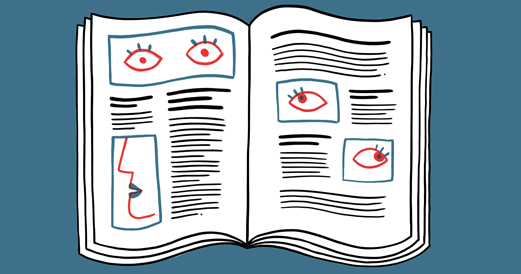
New method identifies two-hit genetic variation in autism; and more
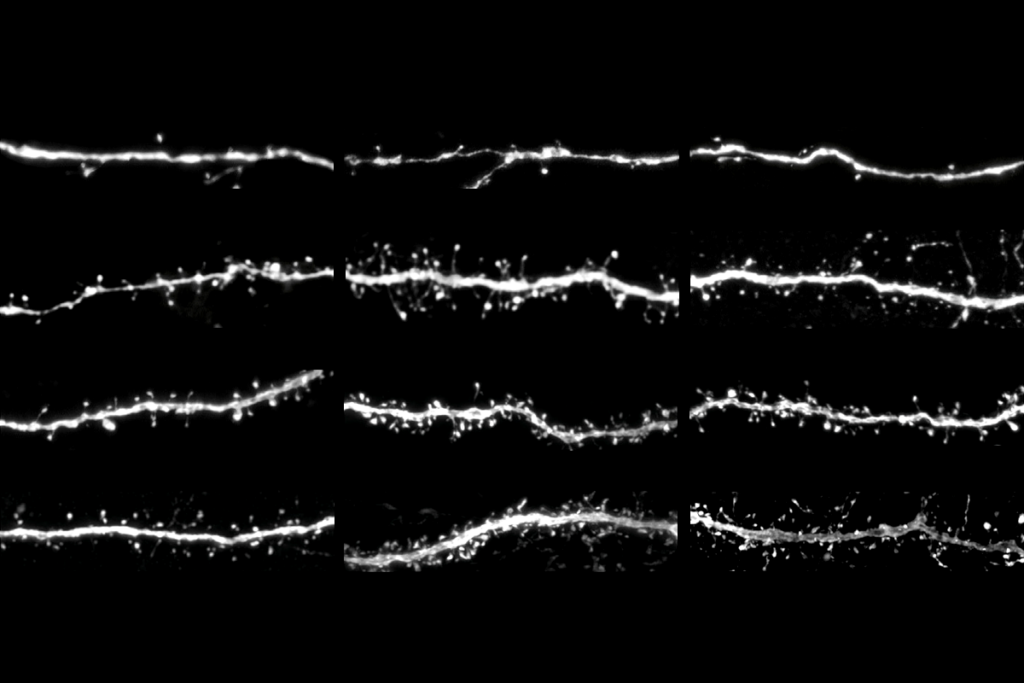
Protein tug-of-war controls pace of synaptic development, sets human brains apart
Explore more from The Transmitter
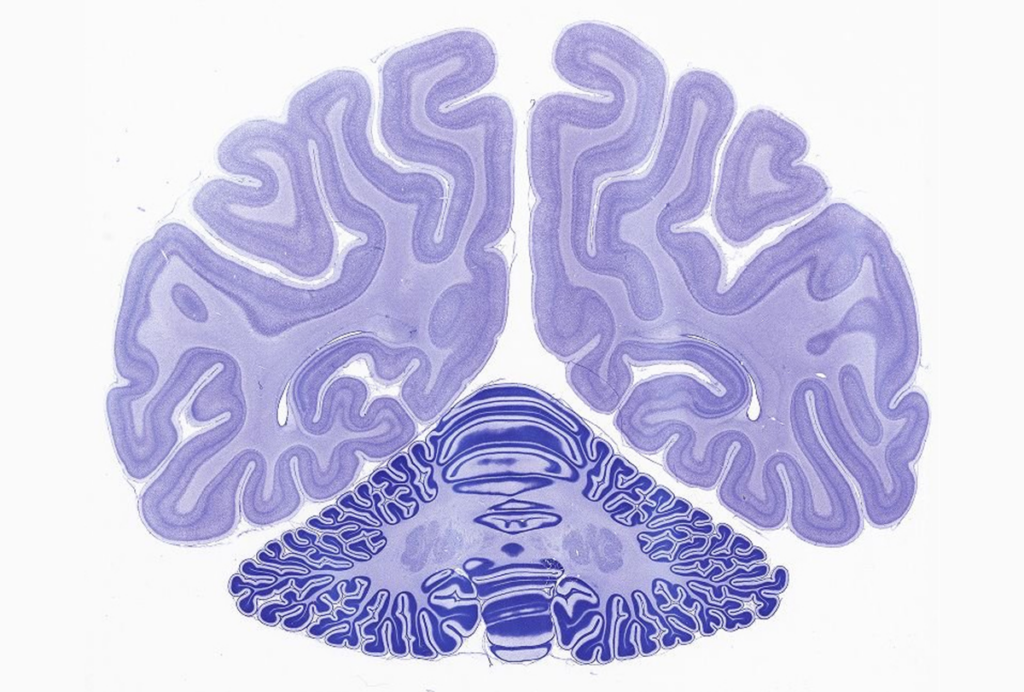
Nonhuman primate research to lose federal funding at major European facility
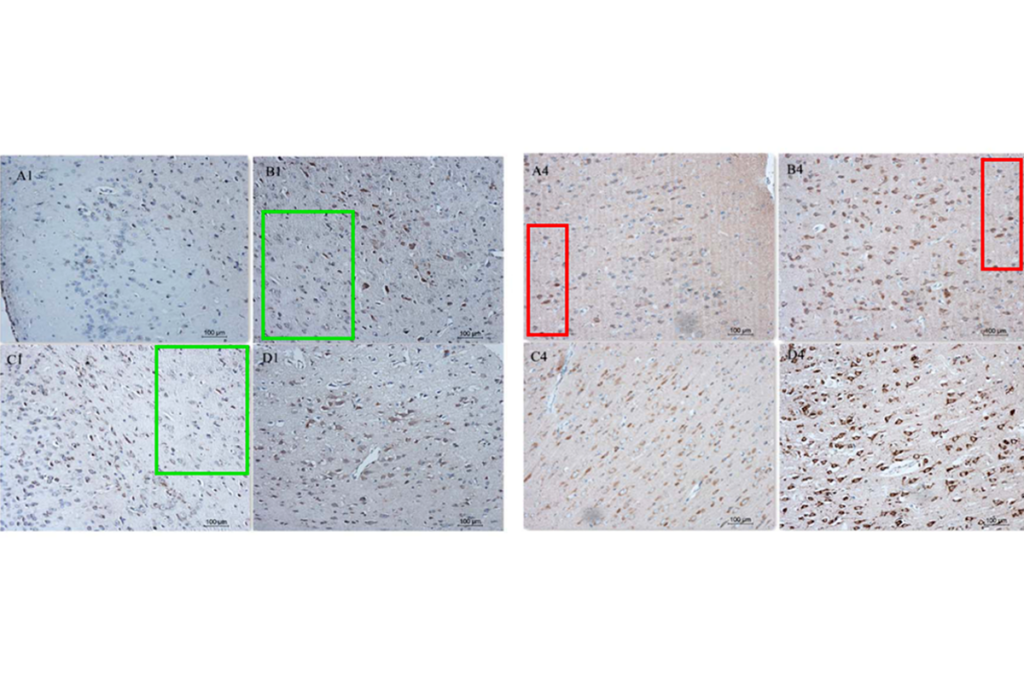
Image integrity issues create new headache for subarachnoid hemorrhage research
